My Grief & Growth Notebook: A Visual Roadmap for Change
/ General : Litsa

The following is a guest post by Lauren McGovern. Lauren lives in the Adirondack Mountains of northern New York. She is a teacher at North Country School in Lake Placid, NY.
Visit laurenmcgovern.online for more about her and her work.
In the late 1990s, fresh out of graduate school, I landed a job at an expansive tri-county agency covering a range of services and simply called The Crisis Center. I staffed the rape crisis hotline, provided crime victim advocacy services, and counseled adults, children, and families.
During my five years with the nonprofit, I learned a technique—a tool utilizing collage, text, drawing, and photos—to help clients who'd experienced sexual assault create a new narrative about themselves, their relationship with the abuser, and a healthy path forward.
The process I learned to help clients reframe their trauma became an important feature of my own healing 17 years later when I lost my teenaged son to suicide. I call it my Grief & Growth (G&G) Notebook. It's filled with sketches of the future I want and the past I try to see differently. It's a mixed-media assemblage to display the messages about living in the present while acknowledging both the heartbreak and joy of memories. The various pages together help me see a more nuanced and fuller picture of my past juxtaposed with the solid, sustaining, and loving relationships in my current life. Like Megan Devine so aptly shared in her groundbreaking work It's OK that You're Not OK, living with grief isn't about removing the pain, but healing does involve relieving some of the suffering. My G&G Notebook is a personal roadmap for the grief I have to carry.
Reflection & Direction
Reframing, in the most basic clinical definition, means to shift your mindset or perspective about a situation, person, or relationship. Similarly, our personal narrative or the story we tell ourselves about our experience within the world can be examined with a strengths-based approach instead of a deficit model.
Before my son died, I'd suffered the loss of a dear friend to cancer when she was 35, a younger cousin's drowning, and the deaths of my grandparents. None of those events prepared me for the bulldozer of grief that flattened me when I lost my son, though. The manner of his death felt like the bulldozer shifted into reverse the moment I tried to stand up.
In a lot of ways, I had an ideal life: loving partner, extraordinary children, beautiful home, meaningful career. I never imagined suicide would touch my family. My G&G Notebook helps me see the positive aspects of my life, mixed with the bereavement, through a lens that honors what I've built, given, and lost.
Examples From My Experience
I started by tapping into the troublesome, raw, and omnipresent thoughts that plagued me in those initial weeks and months in the immediate aftermath of my son's death. I wanted images of my vibrant son "talking" to me, helping me understand the fog of depression swirling around in his head. I was trying to lift the veil of shame, secrecy, and guilt he must've held and that I continued to cling to in those early days.
Illustrating information we're trying to absorb is most effective when we utilize more than one learning modality (reading/writing, visual, auditory, and kinesthetic) coupled with an emotional experience.
Sunni Brown, author and visual thinking consultant
I created pages where he acknowledged all the love and beauty that was present in our brief time together. When one of his friends provided a photo of him, alone at the greenroom mirror backstage before a theater production, looking pensively at his reflection, I knew it would be ideal for something I envisioned him saying to me. It's a response from him about the signs I thought I missed; he offered that he kept things from me, too.
I also needed a page to transform the unsettling and disturbing memory of sitting by my son's bedside for two days in the ICU, hoping he'd wake up healthy and whole. My family were the "lucky" ones—experiencing a hospital death pre-COVID—when so many of us surrounded him and held him. We squeezed his hands, kissed his forehead, offered up his favorite music, and whispered in his ears. All his grandparents, an aunt, uncle, and cousin were there together with his older brother, father, and me. I wanted a page to remind myself to remember the warmth and reverence shared in that place as he left, just as many of the same people were there on the early spring afternoon when he arrived.
When the Wall Street Journal paired its February 8, 2019 essay by Katy Butler about having a good death with a large, colorful illustration by Brian Stauffer of a person lying in bed, an arm outstretched with a flat palm to receive the rainbow-colored droplets, three figures standing nearby, their arms entwined, and another figure behind the dying person, laying loving hands atop their head, I knew I'd found what I needed. After reading the piece, I carefully went about constructing the visual I needed to shape. I used oversized stickers to spell out L-O-V-E, superimposed on the graphic.
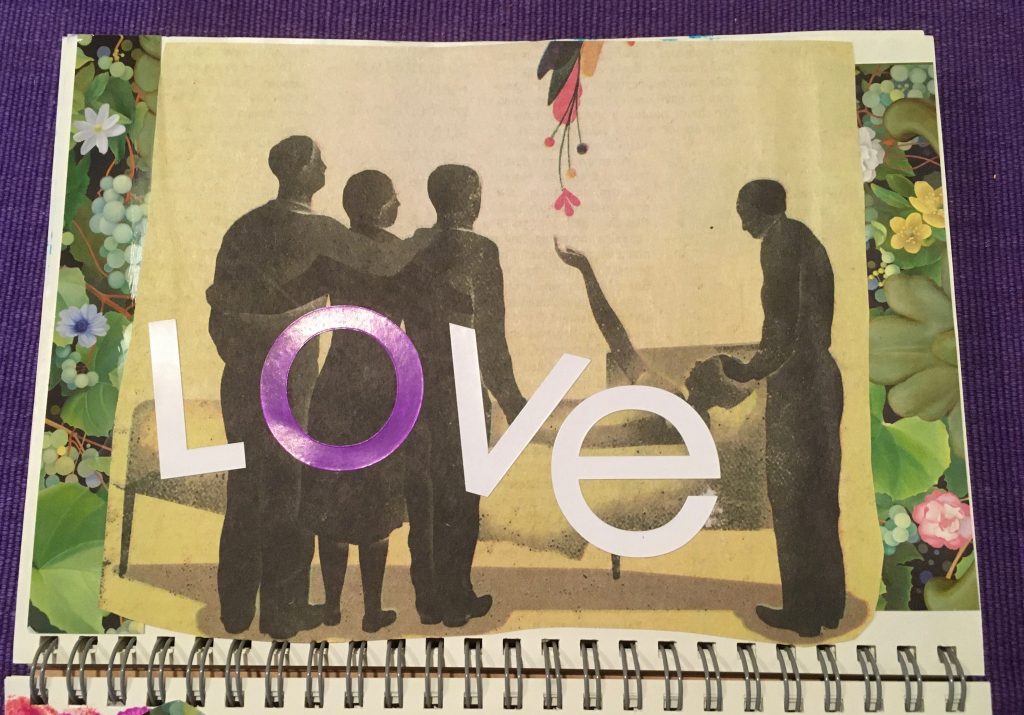
Portable & Personal
Integrating the loss of a loved one into your life means being patient and self-compassionate. This project was one of several I engaged in during the first 18 months of my grief journey. Designing my G&G Notebook is part of my healing process of shifting the question from "Why?" to "What now?", a constant refrain I heard during the videos I consumed about post-traumatic growth from the National Institute for the Clinical Application of Behavioral Medicine (NICABM) and reiterated by author, resilience researcher, and bereaved parent, Dr. Lucy Hone, in her deeply moving book Resilient Grieving.
There are pages I've redesigned with time and distance. Days and weeks go by when I don't create a single piece for the notebook; sentences I've salvaged from newspapers and magazines, graphics, and photos pile up on my studio table. I understand I'll create when and if I'm inspired to do so.
The loss of my dear boy changed the trajectory of my personal path and his memory is never far from my mind. I cannot change what happened to me, but I can do my best to chart a future that feels purposeful and safe. Having visual reminders bound together in one illustrative journal to turn to when the winds of regret, guilt, and sorrow blow in helps me attend to those emotions and recalibrate so I can function more effectively and productively in the life I have now, with the loved ones here. I think my former Crisis Center clients would be proud of me.
Supplies & Support
You'll only need basic supplies to start your own grief and growth notebook
- A sturdy sketchbook
- Collage making materials
- Blank shipping labels (optional)
these are useful to create conversation "bubbles"
- Tracing paper (optional)
to trace you loved one's handwriting
A NOTE OF CAUTION: Creating your own Grief & Growth Notebook can be an emotionally taxing process. My clinical background and training helped me considerably throughout this project. Gauge your wellbeing and rally support if you're finding the experience more triggering than transformative. Consider engaging a certified therapist or mental health counselor for guidance and direction about how to reframe some of your personal grief and loss before you begin construction.
Need help getting started? Lauren offers virtual and in-person Grief & Growth Notebook classes.

We invite you to share your experiences, questions, and resource suggestions with the WYG community in the discussion section below.
We wrote a book!
After writing online articles for What’s Your Grief
for over a decade, we finally wrote a tangible,
real-life book!
What’s Your Grief? Lists to Help you Through Any Loss is for people experiencing any type of loss. This book discusses some of the most common grief experiences and breaks down psychological concepts to help you understand your thoughts and emotions. It also shares useful coping tools, and helps the reader reflect on their unique relationship with grief and loss.
You can find What’s Your Grief? Lists to Help you Through Any Loss wherever you buy books:
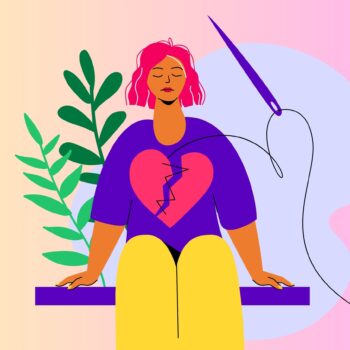
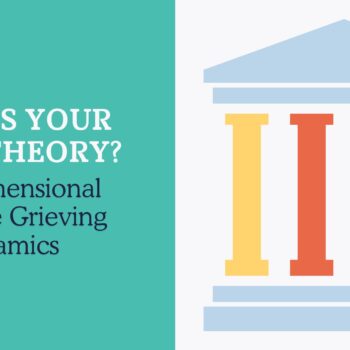

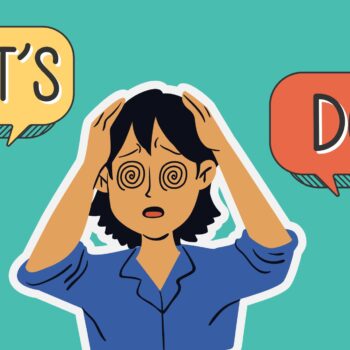
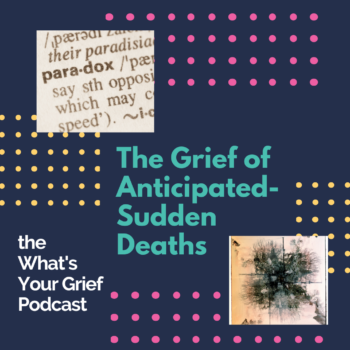
Sue March 16, 2022 at 1:57 am
Thank you for the article on creatively expressing grief and documenting a legacy of your loved one.
My son Nathan passed in 2018. I was a mind person but now thru illustration, journaling and poetry l try to live thru the heart. My notebook of illustrations were initially memories, connections, grief symbols and have now moved to coping strategies and symbols of spiritualism and hope. But over time l have noticed that some illustrations are repeated. It helps to look back and reflect on the journey.
Lee February 22, 2022 at 12:46 pm
I love 💕 the idea of a Grief and Growth journal! I have trouble just journaling. This article appealed to the creative side of my brain and really made me excited to journal my grief and more importantly my growth as I continue along this journey.
Dawn Freeman February 22, 2022 at 12:05 pm
Thank you for sharing this powerful tool for healing. With that being said, I echo the author’s sentiments to reach out to a trained professional. An art therapist who specializes in grief would be instrumental in navigating this art therapy intervention. I would recommend finding one through The American Art Therapy Association.
Published: Creating a Grief & Growth Notebook | Lauren McGovern February 21, 2022 at 12:54 pm
[…] What’s Your Grief, a valuable website for the bereaved, published the article I wrote about crafting my visual roadmap for resiliency, my Grief & Growth Notebook process and why it works. Check it out here: G&G Notebook Article […]